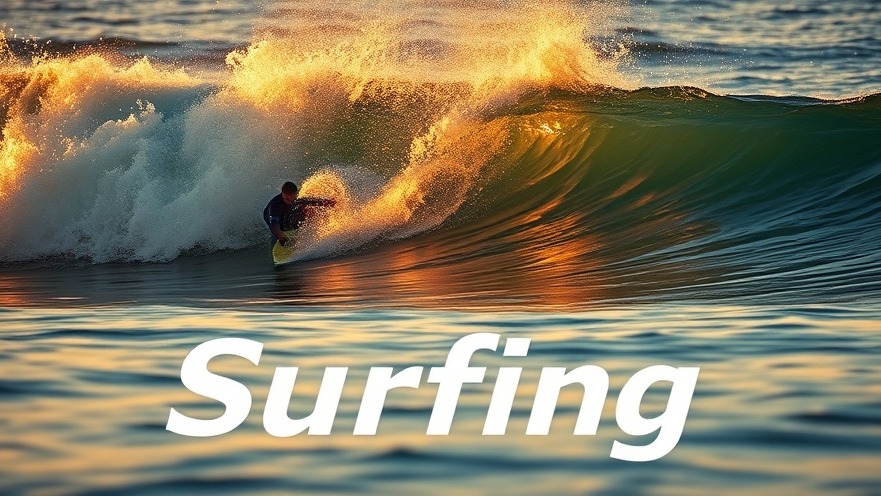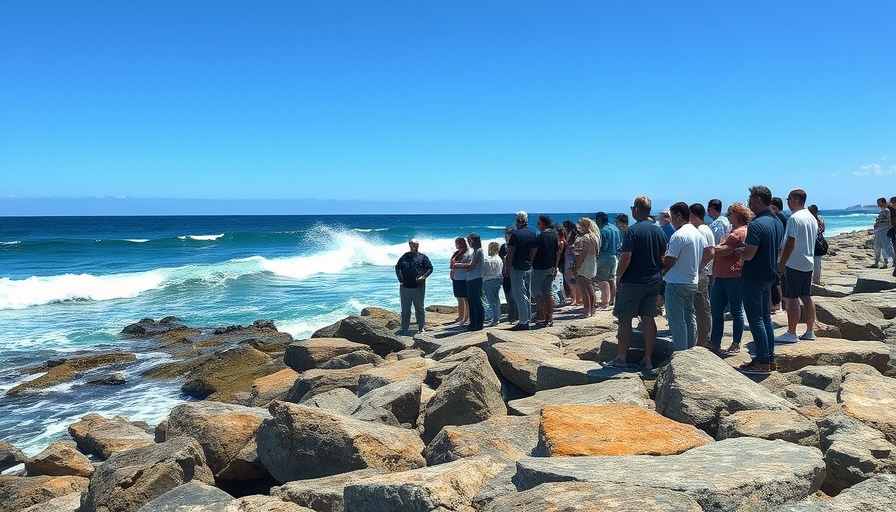
Surfing on the Edge of Danger: The Reality of Imperial Beach
Every winter, San Diego’s coastline boasts some of the best waves for surfing, but the southern tip at Imperial Beach tells a far darker story. Known for its stunning yet treacherous surf, especially at the infamous Tijuana Sloughs where waves can soar above 20 feet, this beach is one of the most alluring spots for die-hard surf enthusiasts. However, it also holds the grim title of the most polluted beach in America.
The Toxic Truth Behind the Waves
Local surfers have learned to adapt to this harsh reality, navigating not only the waves but also the hazardous water conditions. With a wastewater treatment plant nearby, Imperial Beach is often engulfed in the remnants of raw sewage, highlighted by thick brown plumes that can be seen in the water. This shocking level of pollution raises serious health concerns, and many surfers, like local Dwayne Fernandez, now monitor water quality reports as carefully as they do surf conditions.
Community and Culture: The Surfing Spirit Lives On
Despite the risks, a strong surf culture persists in IB, bringing with it a sense of community pride. Longtime surfer Jeff Knox remarks about the challenges of balancing local heritage with health concerns, sharing that even as conditions worsen, the allure of a great wave remains hard to resist. His insight illustrates not just a love of surfing, but the deep-rooted connection to the ocean that drives many to continue riding the waves, even when it seems foolish.
Health Risks: What Surfers Should Know
For those who ignore warnings, the health repercussions can be severe. Surfers in conditions laden with bacteria face risks ranging from nausea and diarrheal diseases to serious infections like hepatitis and MRSA. The alarming reality is that 100% of water samples from Imperial Beach in 2023 tested above safe levels for swimming, forcing authorities to close the beach for hundreds of days annually to safeguard public health. This figure starkly underscores the desperate need for attention toward improving water quality and safety in the area.
A Call for Action: Clean Up the Waters
The plight of Imperial Beach surfers is not just a local issue but a national concern regarding environmental management and public health. Activists, including those from the Surfrider Foundation, are demanding strengthened regulations and active participation from local government to mitigate pollution. Community members want to reclaim a beach they love but fear to swim or surf in safely, highlighting a poignant contrast between passion for the sport and the shadow of pollution.
The need for action is clear. Changing tides demand concerted efforts to protect our oceans. Surfers and beachgoers alike can play a role by staying informed and advocating for cleaner waters. By becoming involved with environmental organizations, attending local meetings, or even just spreading awareness through social media, we can contribute to the movement that calls for a clean and healthy ocean.
Conclusion: A Community Resilient
Imperial Beach remains a reminder of the enduring spirit of surfers who are determined to enjoy the ocean despite its dangers. Embracing this resilience, locals hold onto the hope that conditions will improve, ensuring future generations can learn to surf in safe, clean waters. As we gain insights from their experiences, it becomes clearer than ever that we must rally together—not just for surf culture, but for the health and vitality of our marine environments.
 Add Row
Add Row  Add
Add 




Write A Comment